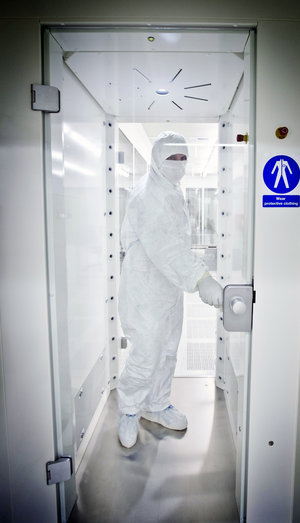Accept all cookies Accept only essential cookies See our Cookie Notice

About ESA
The European Space Agency (ESA) is Europe’s gateway to space. Its mission is to shape the development of Europe’s space capability and ensure that investment in space continues to deliver benefits to the citizens of Europe and the world.
Highlights
ESA - United space in Europe
This is ESA ESA facts Member States & Cooperating States Funding Director General Top management For Member State Delegations European vision European Space Policy ESA & EU Space Councils Responsibility & Sustainability Annual Report Calendar of meetings Corporate newsEstablishments & sites
ESA Headquarters ESA ESTEC ESA ESOC ESA ESRIN ESA EAC ESA ESAC Europe's Spaceport ESA ESEC ESA ECSAT Brussels Office Washington OfficeWorking with ESA
Business with ESA ESA Commercialisation Gateway Law at ESA Careers Cyber resilience at ESA IT at ESA Newsroom Partnerships Merchandising Licence Education Open Space Innovation Platform Integrity and Reporting Administrative Tribunal Health and SafetyMore about ESA
History ESA Historical Archives Exhibitions Publications Art & Culture ESA Merchandise Kids Diversity ESA Brand CentreSpace in Member States
Find out more about space activities in our 23 Member States, and understand how ESA works together with their national agencies, institutions and organisations.
Science & Exploration
Exploring our Solar System and unlocking the secrets of the Universe
Go to topicAstronauts
Missions
Juice Euclid Webb Solar Orbiter BepiColombo Gaia ExoMars Cheops Exoplanet missions More missionsActivities
International Space Station Orion service module Gateway Concordia Caves & Pangaea BenefitsLatest
Space Safety
Protecting life and infrastructure on Earth and in orbit
Go to topicAsteroids
Asteroids and Planetary Defence Asteroid danger explained Flyeye telescope: asteroid detection Hera mission: asteroid deflection Near-Earth Object Coordination CentreSpace junk
About space debris Space debris by the numbers Space Environment Report In space refuelling, refurbishing and removingSafety from space
Clean Space ecodesign Zero Debris Technologies Space for Earth Supporting Sustainable DevelopmentSpace weather
Space weather and its hazards ESA Vigil: providing solar warning ESA Space Weather Service NetworkLatest
Applications
Using space to benefit citizens and meet future challenges on Earth
Go to topicObserving the Earth
Observing the Earth Future EO Copernicus Meteorology Space for our climate Satellite missionsCommercialisation
ESA Commercialisation Gateway Open Space Innovation Platform Business Incubation ESA Space SolutionsLatest
Enabling & Support
Making space accessible and developing the technologies for the future
Go to topicBuilding missions
Space Engineering and Technology Test centre Laboratories Concurrent Design Facility Preparing for the future Shaping the Future Discovery and Preparation Advanced Concepts TeamSpace transportation
Space Transportation Ariane Vega Space Rider Future space transportation Boost! Europe's Spaceport Launches from Europe's Spaceport from 2012Latest

Sterilising an antenna for Mars
Thank you for liking
You have already liked this page, you can only like it once!
A ground penetrating radar antenna for ESA’s ExoMars 2020 rover being pre-cleaned in an ultra-cleanroom environment in preparation for its sterilisation process, in an effort to prevent terrestrial microbes coming along for the ride to the red planet.
Part of the Agency’s Life, Physical Sciences and Life Support Laboratory based in its Netherlands technical centre, This 35 sq. m ‘ISO Class 1’ cleanroom is one of the cleanest places in Europe. It is equipped with a dry heat steriliser used to reduce the microbial ‘bioburden’ on equipment destined for alien worlds.
The item seen here is the WISDOM (Water Ice Subsurface Deposit Observation on Mars) radar antenna flight model, designed to sound the subsurface of Mars for water ice.
“After pre-cleaning and then the taking of sample swabs, the antenna was placed into our dry heat steriliser, to target the required 99.9% bioburden reduction to meet ExoMars 2020’s cleanliness requirements,” explains technician Alan Dowson.
“To check the effectiveness of this process, the swabs are subjected to a comparable heat shock and then cultivated for 72 hours, to analyse the number of spores and bacteria able to survive. The viable bioburden is then calculated for the surface area of the WISDOM antenna. If this level is below the mission’s maximum then it is cleared for delivery.”
All the cleanroom’s air passes through a two-stage filter system. Anyone entering the chamber has to gown up in a much more rigorous way than a hospital surgeon, before passing through an air shower to remove any remaining contaminants.
The chamber’s cleanliness is such that it contains less than 10 particles smaller than a thousandth of a millimetre per cubic metre. A comparable sample of the outside air could well contain millions.
By international planetary protection agreement, space agencies are legally required to prevent terrestrial microbes hitchhiking to other planets and moons in our Solar System where past or present alien life is a possibility.
-
CREDIT
ESA–A. Dowson -
LICENCE
ESA Standard Licence

Heat sterilisation of ExoMars parachute

Sterilisation for planetary protection

Life, Physical Sciences & Life Support Laboratory clean room

Time-lapse of test antenna arrival















 Germany
Germany
 Austria
Austria
 Belgium
Belgium
 Denmark
Denmark
 Spain
Spain
 Estonia
Estonia
 Finland
Finland
 France
France
 Greece
Greece
 Hungary
Hungary
 Ireland
Ireland
 Italy
Italy
 Luxembourg
Luxembourg
 Norway
Norway
 The Netherlands
The Netherlands
 Poland
Poland
 Portugal
Portugal
 Czechia
Czechia
 Romania
Romania
 United Kingdom
United Kingdom
 Slovenia
Slovenia
 Sweden
Sweden
 Switzerland
Switzerland

























